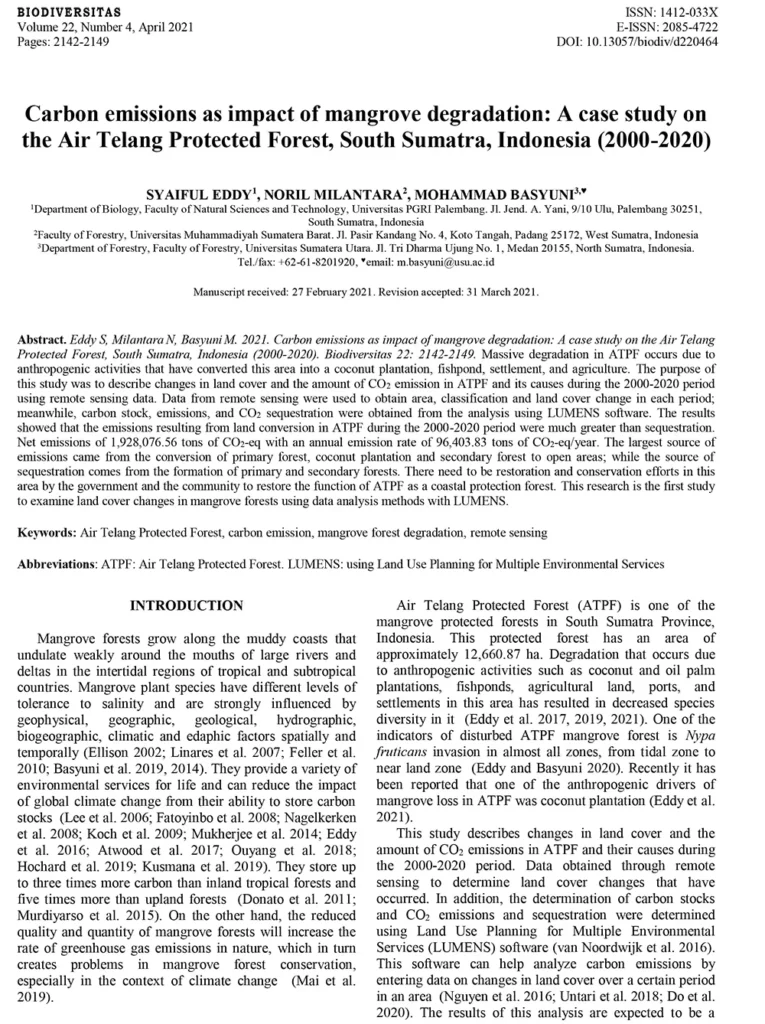Carbon emissions as impact of mangrove degradation: A case study on the Air Telang Protected Forest, South Sumatra, Indonesia (2000-2020). Biodiversitas 22: 2142-2149. Massive degradation in ATPF occurs due to anthropogenic activities that have converted this area into a coconut plantation, fishpond, settlement, and agriculture. The purpose of this study was to describe changes in land cover and the amount of CO 2 emission in ATPF and its causes during the 2000-2020 period using remote sensing data. Data from remote sensing were used to obtain area, classification and land cover change in each period; meanwhile, carbon stock, emissions, and CO 2 sequestration were obtained from the analysis using LUMENS software. The results showed that the emissions resulting from land conversion in ATPF during the 2000-2020 period were much greater than sequestration. Net emissions of 1,928,076.56 tons of CO 2 -eq with an annual emission rate of 96,403.83 tons of CO 2 -eq/year. The largest source of emissions came from the conversion of primary forest, coconut plantation and secondary forest to open areas; while the source of sequestration comes from the formation of primary and secondary forests. There need to be restoration and conservation efforts in this area by the government and the community to restore the function of ATPF as a coastal protection forest. This research is the first study to examine land cover changes in mangrove forests using data analysis methods with LUMENS.
Carbon emissions as impact of mangrove degradation: A case study on the Air Telang Protected Forest, South Sumatra, Indonesia (2000-2020)
Carbon emissions as impact of mangrove degradation: A case study on the Air Telang Protected Forest, South Sumatra, Indonesia (2000-2020)
Facebook
Twitter
LinkedIn
WhatsApp

Authors:
Syaiful Eddy, Noril Milantara, Mohammad Basyuni
